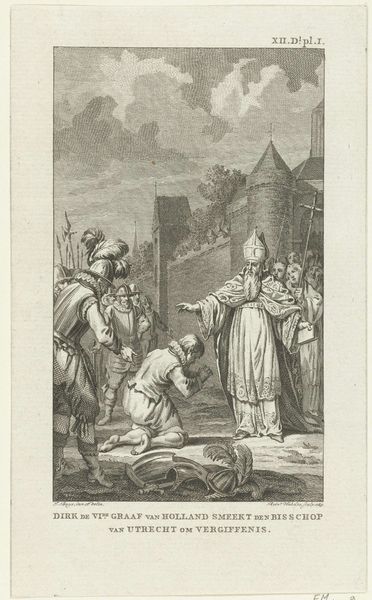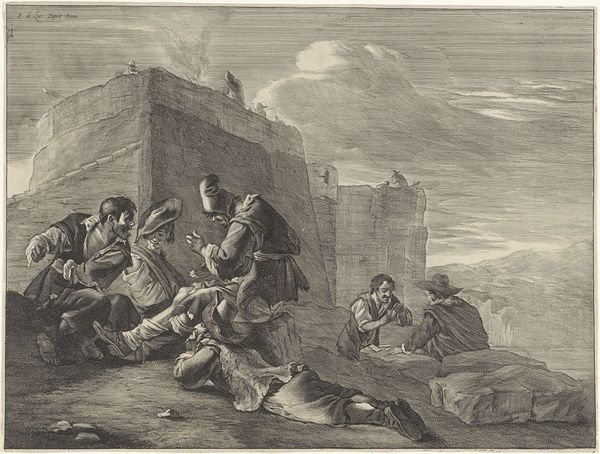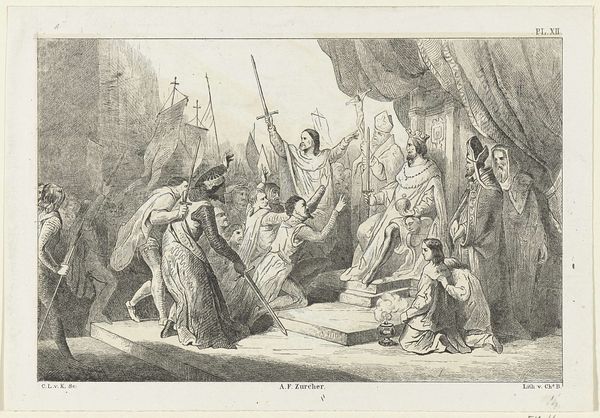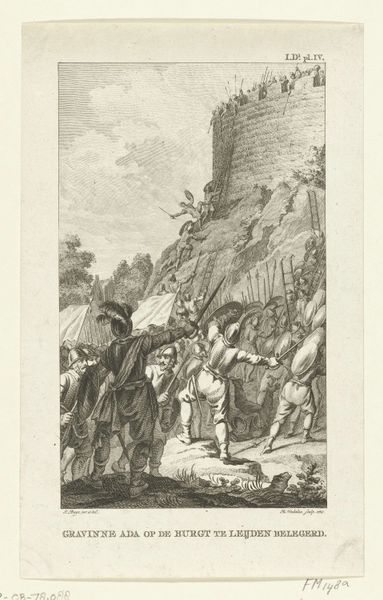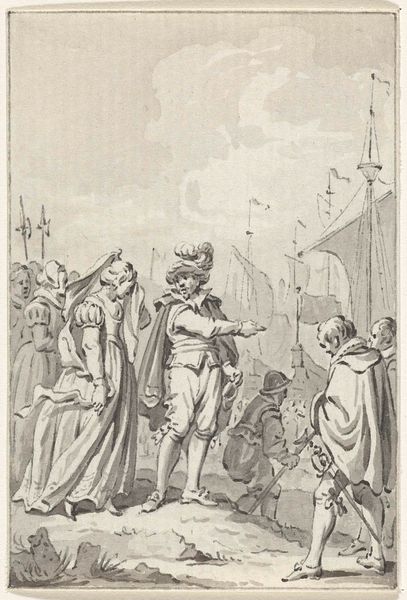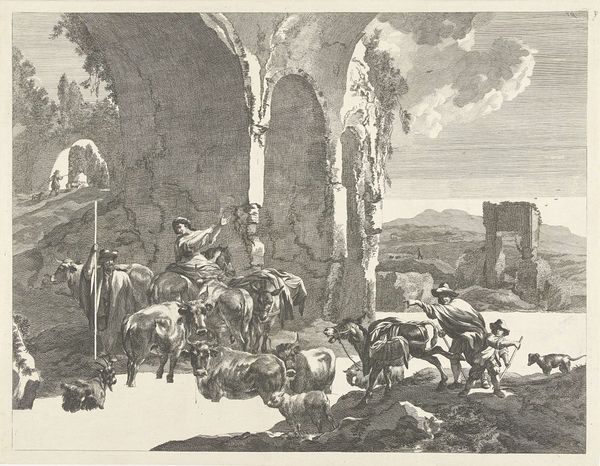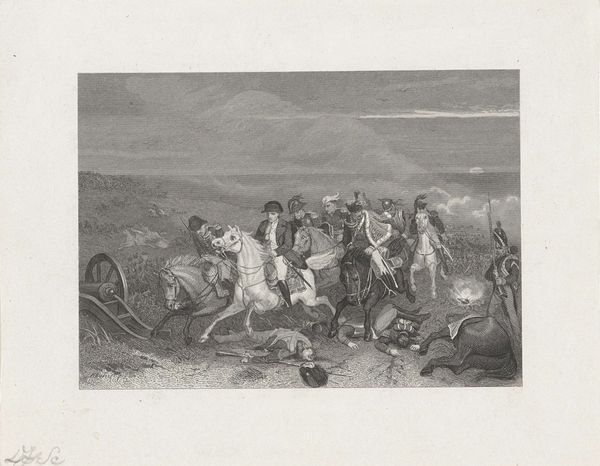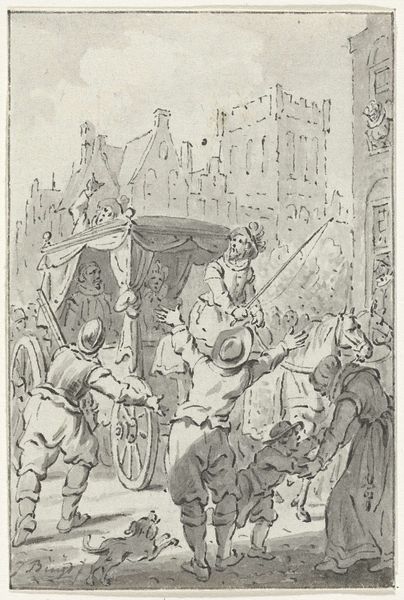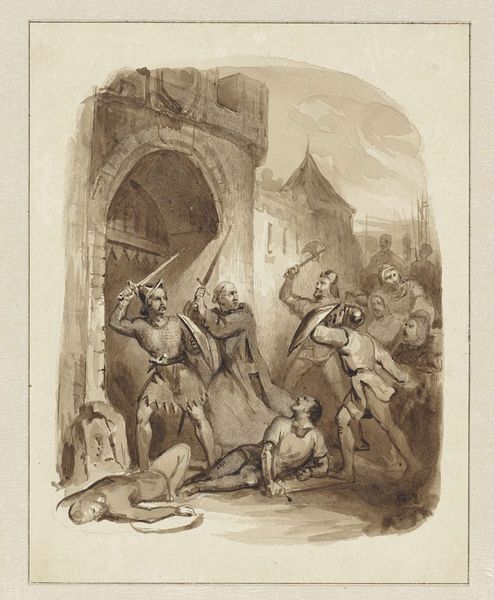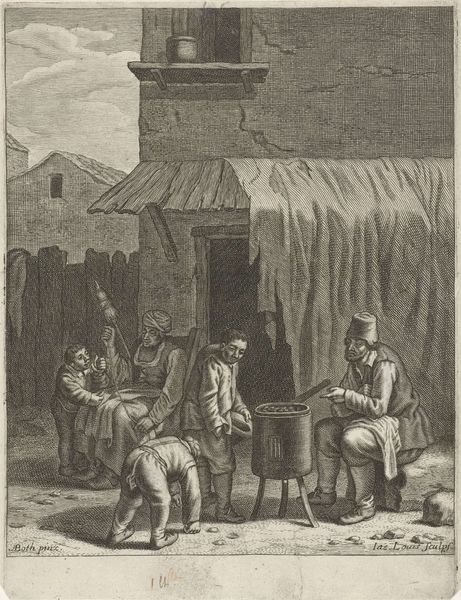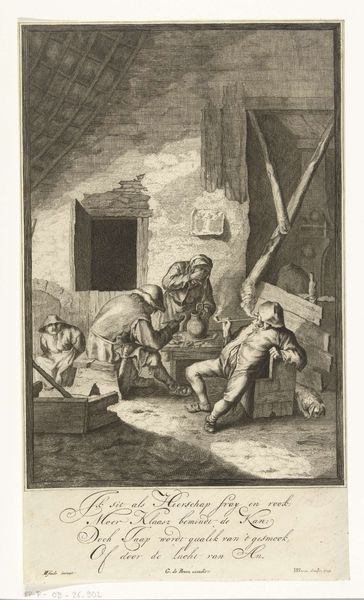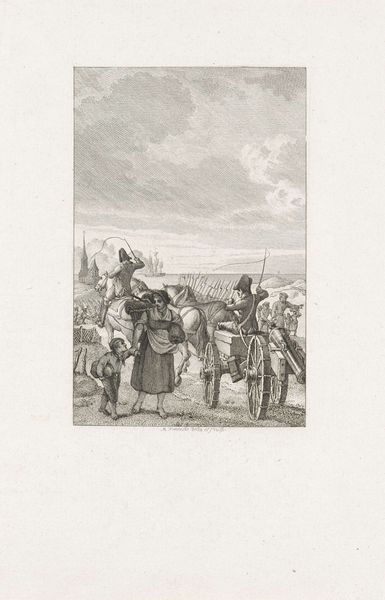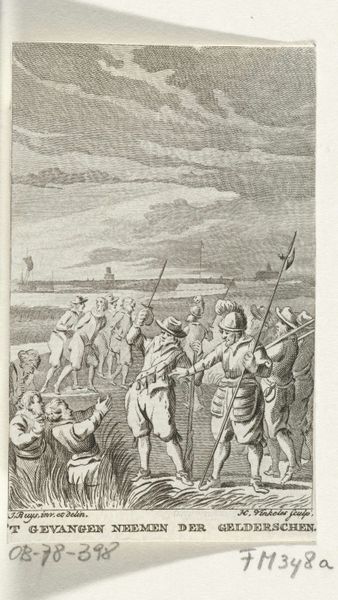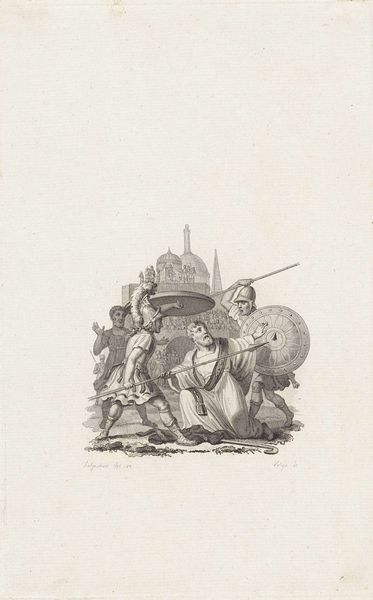
Inname van Maastricht door de Spanjaarden, 1579 1855
0:00
0:00
print, graphite, engraving
#
pencil drawn
# print
#
pencil sketch
#
charcoal drawing
#
pencil drawing
#
graphite
#
genre-painting
#
history-painting
#
graphite
#
engraving
Dimensions: height 174 mm, width 140 mm
Copyright: Rijks Museum: Open Domain
Curator: This print, titled "Inname van Maastricht door de Spanjaarden, 1579," was rendered by Jan Frederik Christiaan Reckleben in 1855. It's currently held here at the Rijksmuseum. Editor: It immediately strikes me as somber. There’s a heavy atmosphere, almost melancholic, despite supposedly depicting a victory. Everyone looks utterly exhausted. Curator: Precisely. Notice how Reckleben, though working centuries later, evokes a distinct feeling of weary resignation. Soldiers are slumped everywhere, their armor heavy, the battlements scarred. The symbolic weight of that moment in 1579 – a key event in Dutch history – is tangible. Editor: The skeletal remains strewn on the ground are impossible to ignore. They inject a morbid undercurrent, suggesting not celebration but devastation. Conquest often carries a terrible cost, and this print seems to amplify that unsettling truth, stripping away any heroic gloss. Curator: Those remains could also point to the frailty of earthly power and glory, echoing the vanitas tradition, urging reflection on mortality even in the midst of triumph. Note, too, how the architectural features, especially the crude defensive structures and makeshift towers, almost dwarf the human figures. It’s not romantic. Editor: Definitely not romanticized. And to me, those hastily constructed defenses reveal desperation on both sides. This wasn’t a clean victory; it was brutal and likely prolonged, resulting in immense suffering for everyone involved, especially the civilian population of Maastricht. What were his source materials and how much historical latitude was there when this was created? Curator: The power resides, perhaps, in Reckleben’s interpretation rather than strict documentary accuracy. He transforms a historical moment into an emblem of enduring themes: the futility of conflict, the human cost of territorial ambition, and the slow march of time that reduces grand achievements to ruins. Editor: The work stands as a potent anti-war statement. Viewing it now, we're compelled to critically consider what truly constitutes 'victory' when human lives and societal well-being are bartered. Reckleben, in his way, urges us to challenge inherited narratives of conquest. Curator: It's a stark, unflinching vision. These carefully crafted engravings, graphite strokes and charcoal shadings, render complex historical and cultural continuities accessible in visual form. I'm impressed with Reckleben's ability to transform narrative into reflection. Editor: It is more affecting because it avoids heroic tropes. It lingers with the defeated and weary rather than exalting a single battle, expanding beyond mere historical account to challenge ingrained concepts about triumph.
Comments
No comments
Be the first to comment and join the conversation on the ultimate creative platform.
